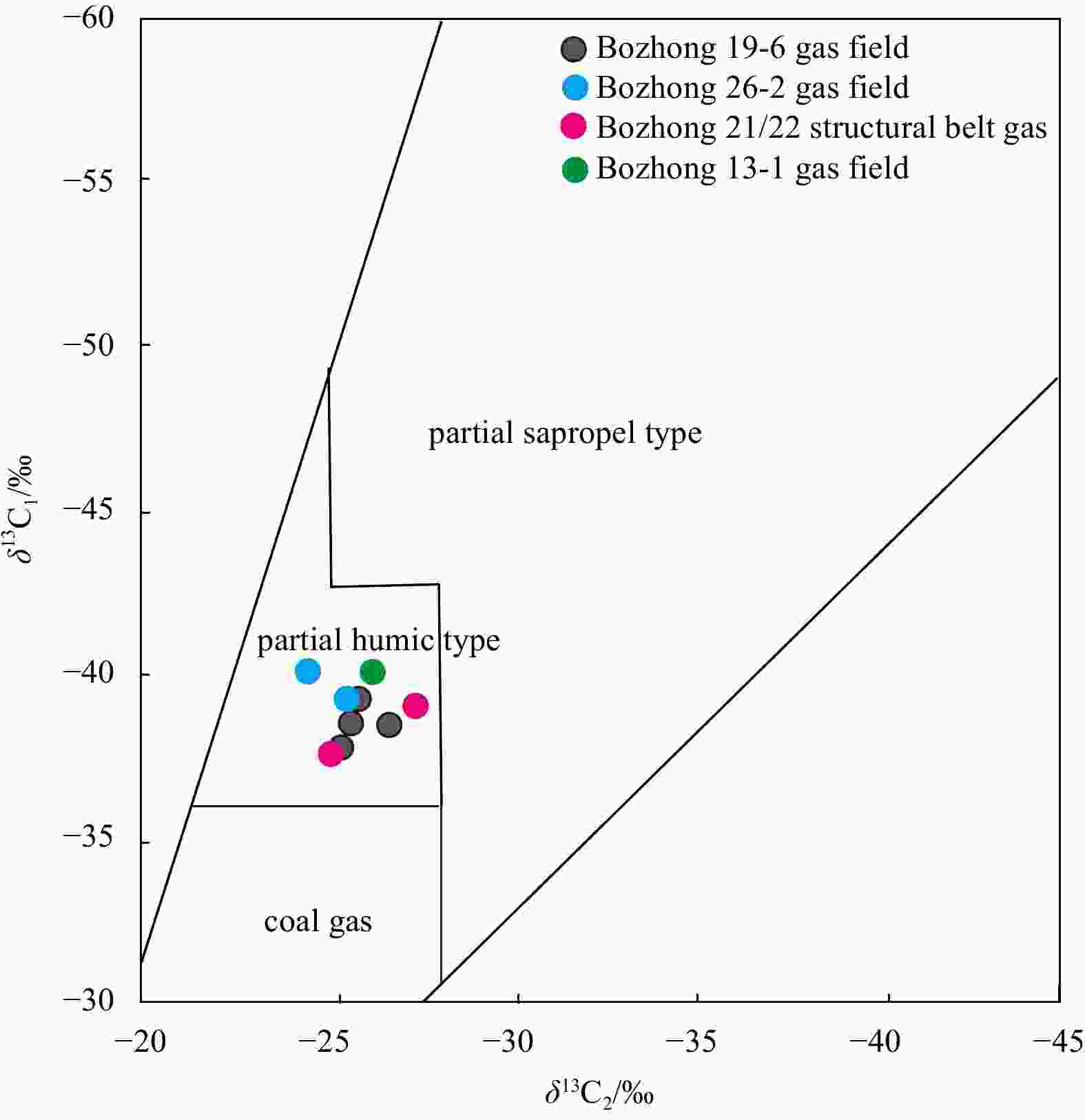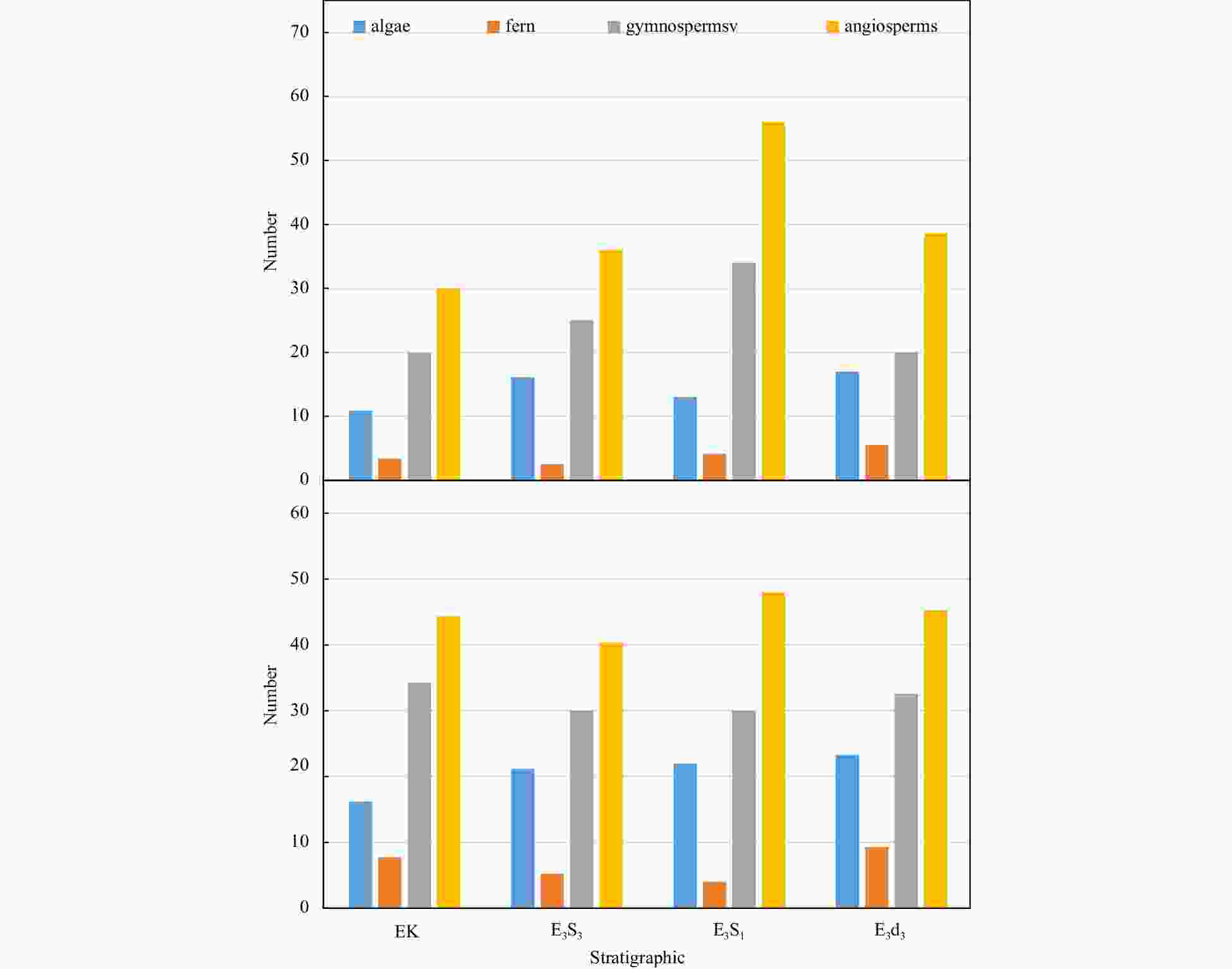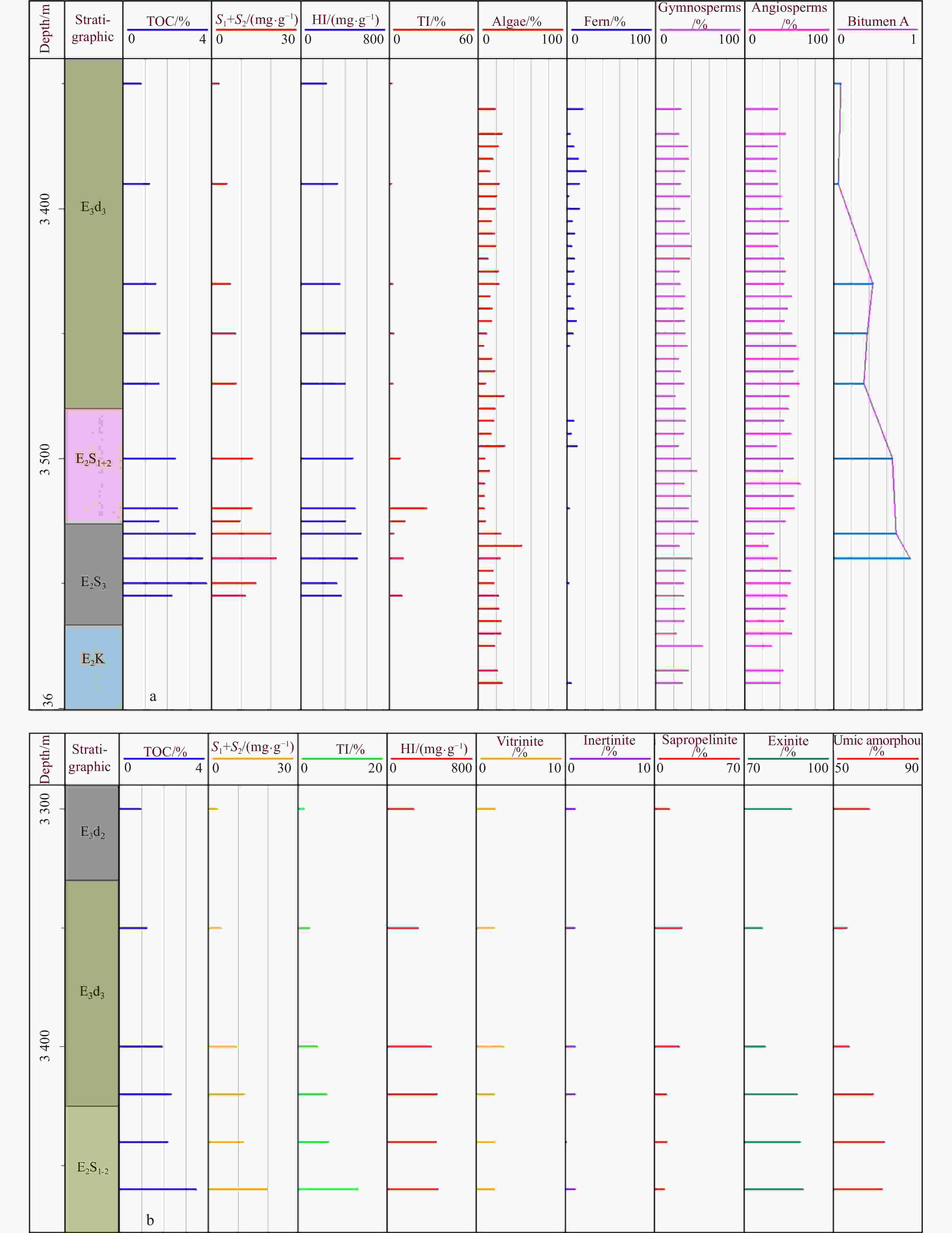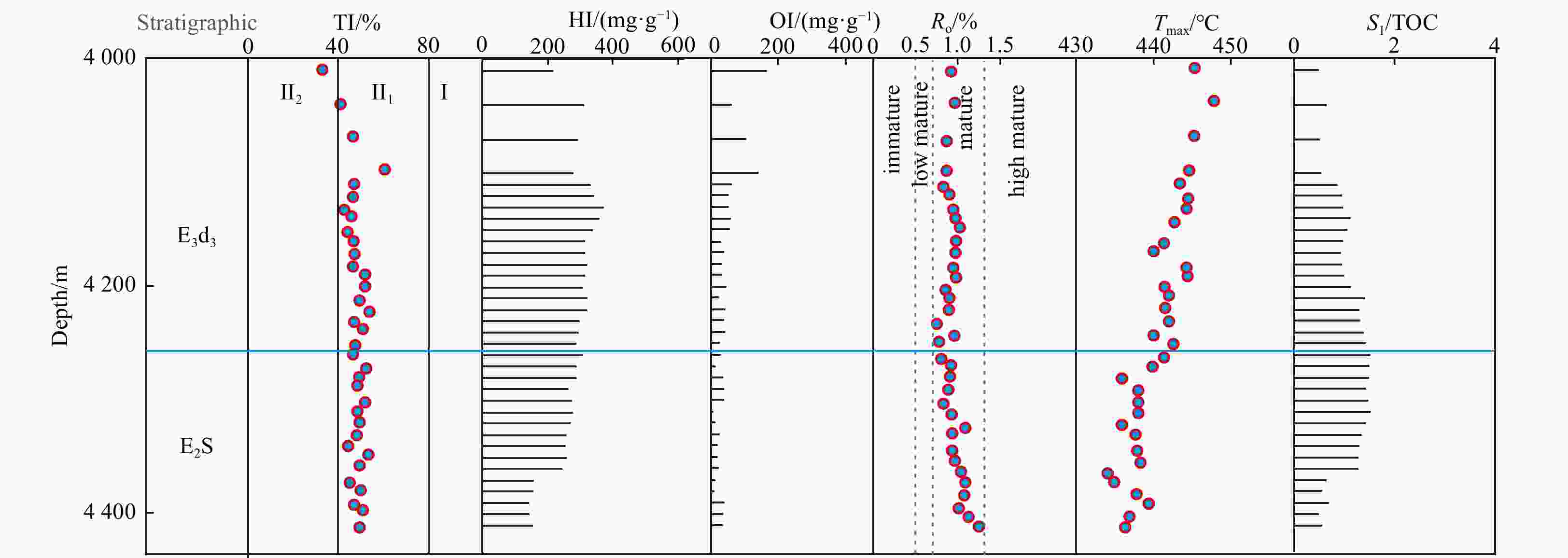Impact of microorganism degradation on hydrocarbon generation of source rocks: A case study of the Bozhong Sag, Bohai Bay Basin
-
Abstract: The discovery of the Bozhong 19-6 gas field, the largest integrated condensate gas field in the eastern China in 2018, opened up a new field for the natural gas exploration deep strata in the Bohai Bay Basin, demonstrating there is a great potential for natural gas exploration in oil-type basins. The ethane isotope of the Bozhong 19-6 condensate gas is heavy, showing the characteristics of partial humic gas. In this paper, aimed at the source rocks of the Bozhong 19-6 gas field in the Bohai Bay Basin, the characteristics of the source rocks in the Bozhong 19-6 structural belt were clarified and the reason are explained from impact of microorganism degradation on hydrocarbon generation of source rocks why the condensate oil and gas had heavy carbon isotope and why it showed partial humic characteristics was explored based on the research of parent materials. The following conclusions were obtained: The paleontology of the Bozhong 19-6 structural belt and its surrounding sub-sags is dominated by higher plants, such as angiosperm and gymnosperm. During the formation of source rocks, under the intensive transformation of microorganism, the original sedimentary organic matter such as higher plants was degraded and transformed by defunctionalization. Especially, the transformation of anaerobic microorganisms on source rocks causes the degradation and defunctionalization of a large number of humic products such as higher plants and the increase of hydrogen content. The degradation and transformation of microorganism don’t transform the terrestrial humic organic matter into newly formed “sapropel” hydrocarbons, the source rocks are mixed partial humic source rocks. As a result, hydrogen content incrased and the quality of source rocks was improved, forming the partial humic source rocks dominated by humic amorphous bodies. The partial humic source rocks are the main source rocks in the Bozhong 19-6 gas field, and it is also the internal reason why the isotope of natural gas is heavy.
-
Table 1. Light hydrocarbon parameters of the condensate oil in the Bozhong 19-6 gas field
Parameter BZ19-a BZ19-b BZ19-c BZ19-d BZ19-e K1 1.09 1.10 1.10 1.10 1.10 K2 0.17 0.17 0.17 0.18 0.17 -
Bazhenova O K, Arefiev O A. 1990. Immature oils as the products of early catagenetic transformation of bacterial-algal organic matter. Organic Geochemistry, 16(1–3): 307–311 Behar F, Kressmann S, Rudkiewicz J L, et al. 1992. Experimental simulation in a confined system and kinetic modelling of kerogen and oil cracking. Organic Geochemistry, 19(1–3): 173–189 Cai Jingong, Zeng Xiang, Wei Hailun, et al. 2019. From water body to sediments: exploring the depositional processes of organic matter and their implications. Journal of Palaeogeography (in Chinese), 21(1): 49–66 Chosson P, Lanau C, Connan J, et al. 1991. Biodegradation of refractory hydrocarbon biomarkers from petroleum under laboratory conditions. Nature, 351(6328): 640–642. doi: 10.1038/351640a0 Dai Jinxing, Wu Xiaoqi, Ni Yunyan, et al. 2012. Geochemical characteristics of natural gas from mud volcanoes in the southern Junggar Basin. Science China Earth Sciences, 55(3): 355–367 Guo Liguo, Xiao Xianming, Tian Hui. 2011. Laboratory studies of differences between oil-derived and kerogen maturation gases. Petroleum Geology and Experiment, 33(4): 428–436 Hou Mingcai, Cao Haiyang, Li Huiyong, et al. 2019. Characteristics and controlling factors of deep buried-hill reservoirs in the BZ19-6 structural belt, Bohai Sea area. Natural Gas Industry (in Chinese), 39(1): 33–44 Hu Anwen, Niu Chengmin, Wang Deying, et al. 2020. The characteristics and formation mechanism of condensate oil and gas in Bozhong 19-6 structure, Bozhong Sag, Bohai Bay Basin. Acta Petrolei Sinica (in Chinese), 41(4): 403–411 Huang Ruchang, Li Jingming, Xie Zengye, et al. 1996. Formation and distribution of condensate gas pools in China. Oil & Gas Geology (in Chinese), 17(3): 237–242 Leythaeuser D, Schaefer R G, Weiner B. 1979. Generation of low molecular weight hydrocarbons from organic matter in source beds as a function of temperature and facies. Chemical Geology, 25(1/2): 95–108 Li Wei. 2021. Origin of condensate gas in Bozhong 19-6 gas field in Bohai bay Basin. Journal of Tongji University (Natural Science) (in Chinese), 49(3): 458–466 Li Wei, Li Youchuan, Lan Lei, et al. 2021. Genetic type of condensates oil and oil-gas relationship in the Bozhong 19-6 gas field, Bohai Bay basin. Acta Geologica Sinica (in Chinese), 95(3): 913–923 Li Jian, Ma Wei, Wang Yifeng, et al. 2018. Modeling of the whole hydrocarbon-generating process of sapropelic source rock. Petroleum Exploration and Development, 45(3): 461–471 Ma Bo, Ji Liming, Zhang Mingzhen, et al. 2020. Palynofacies characteristics of source rocks of Lower Cretaceous Chijinbao Formation in Jiuxi Basin and their petroleum geological significance. Acta Petrolei Sinica (in Chinese), 41(11): 1376–1387,1395 Mango F D. 1990. The origin of light cycloalkanes in petroleum. Geochimica et Cosmochimica Acta, 54(1): 23–27. doi: 10.1016/0016-7037(90)90191-M Mango F D. 1997. The light hydrocarbons in petroleum: A critical review. Organic Geochemistry, 26(7/8): 417–440 Mango F D. 2000. The origin of light hydrocarbons. Geochimica et Cosmochimica Acta, 64(7): 1265–1277. doi: 10.1016/S0016-7037(99)00389-0 Moldowan J M, Mccaffrey M A. 1995. A novel microbial hydrocarbon degradation pathway revealed by hopane demethylation in a petroleum reservoir. Geochimica et Cosmochimica Acta, 59(9): 1891–1894. doi: 10.1016/0016-7037(95)00072-8 Shi Hesheng, Wang Qingbin, Wang Jun, et al. 2019. Discovery and exploration significance of large condensate gas fields in BZ19-6 structure in deep Bozhong Sag. China Petroleum Exploration (in Chinese), 24(1): 36–45 Ten Haven H L. 1996. Applications and limitations of Mango’s light hydrocarbon parameters in petroleum correlation studies. Organic Geochemistry, 24(10–11): 957–976 Thompson K F M. 1983. Classification and thermal history of petroleum based on light hydrocarbons. Geochimica et Cosmochimica Acta, 47(2): 303–316. doi: 10.1016/0016-7037(83)90143-6 Xie Zengye, Li Zhisheng, Wei Guoqi, et al. 2016a. Experimental research on the potential of sapropelic kerogen cracking gas and discrimination of oil cracking gas. Natural Gas Geoscience (in Chinese), 27(6): 1057–1066 Xie Shucheng, Liu Deng, Qiu Xuan, et al. 2016b. Microbial roles equivalent to geological agents of high temperature and pressure in deep Earth. Science China Earth Sciences, 59(11): 2098–2104. doi: 10.1007/s11430-015-5442-1 Xu Changgui, Yu Haibo, Wang Jun, et al. 2019. Formation conditions and accumulation characteristics of Bozhong 19-6 large condensate gas field in offshore Bohai Bay Basin. Petroleum Exploration and Development, 46(1): 27–40. doi: 10.1016/S1876-3804(19)30003-5 Xue Yongan, Li Huiyong. 2018. Large condensate gas field in deep Archean metamorphic buried hill in Bohai sea: discovery and geological significance. China Offshore Oil and Gas (in Chinese), 30(3): 1–9 Zhao Mengjun, Lu Shuangfang, Li Jian. 2002. The geochemical features of natural gas in Kuqa depression and the discussion on the gas source. Petroleum Exploration and Development (in Chinese), 29(6): 4–7 Zhao Wenzhi, Wang Zhaoyun, Wang Hongjun, et al. 2011. Further discussion on the connotation and significance of the natural gas relaying generation model from organic matter. Petroleum Exploration and Development, 38(2): 129–135. doi: 10.1016/S1876-3804(11)60021-9 Zhu Xiaojun, Cai Jingong, Liu Weixin, et al. 2016. Occurrence of stable and mobile organic matter in the clay-sized fraction of shale: significance for petroleum geology and carbon cycle. International Journal of Coal Geology, 160–161: 1–10 -





 下载:
下载:













